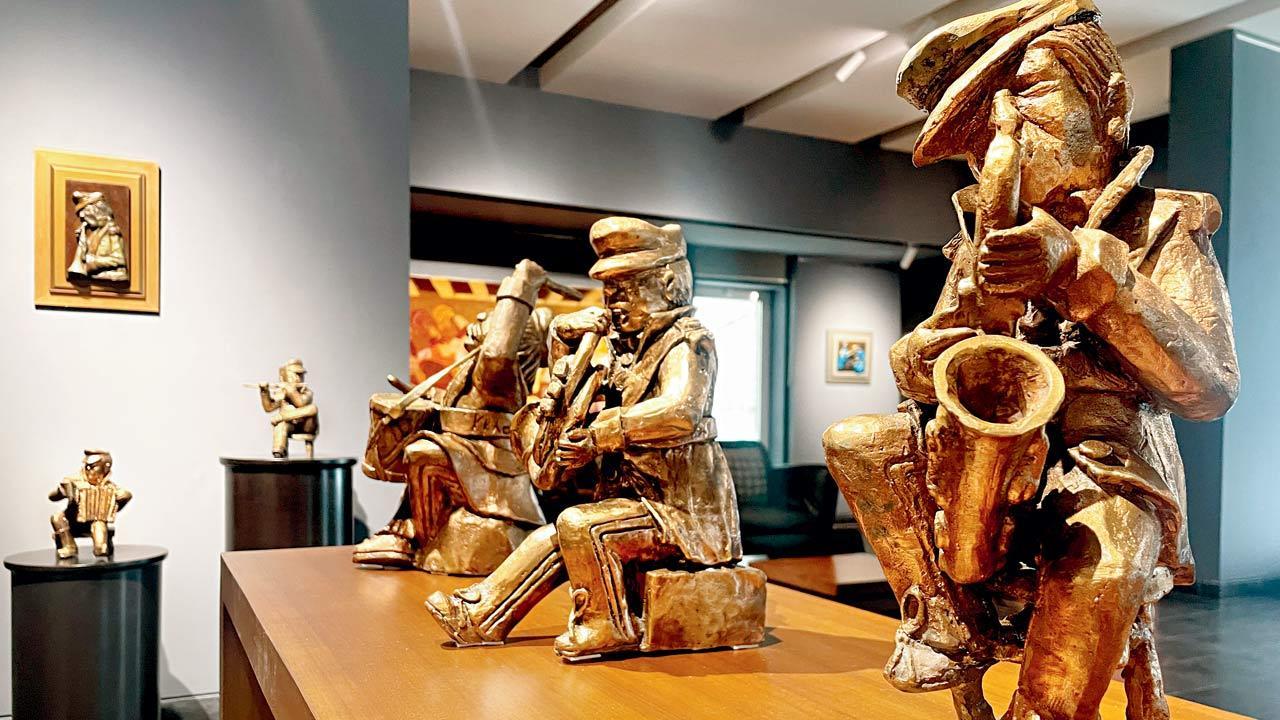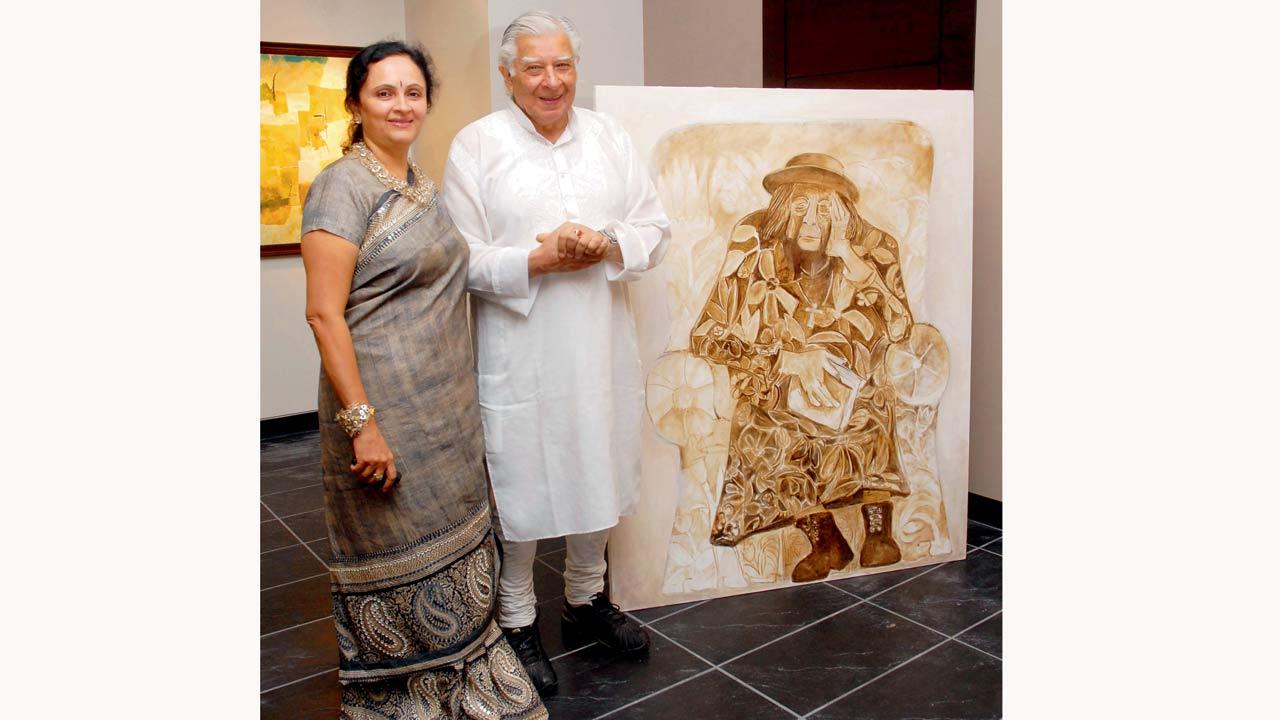Tao Art Gallery celebrates the 100th year of Krishen Khanna, the last surviving progressive artist, highlighting urban, Christian and mythological themes in his distinctive abstracted figurative artwork

The exhibition commemorates Krishen Khanna’s prolific seven-decade-long career and features a collection of sculptures, tapestries, paintings and hand sketches from his various phases
When the Partition of India happened, it became imperative to look for a method of existence. Middle-class families had to scramble for any means of earning… I have seen and been through the wrench of people being thrown out of their world, which has moved me to express their world,” 99-year-old Krishen Khanna tells us in an email interaction, transcribed by his daughter Malati Shah, when we ask him if there is a period in his prolific seven-decade-long career that now feels particularly prominent. Khanna grew up in pre-Partition Lahore, and the country’s turbulent social and political history found a way into his work that encapsulated the human and the everyday. “[O]ne developed a sense of humour and empathy, which buoyed one’s spirits. Add to this my desire and ability to express it,” he observes. “Things that are heavy can be viewed with lightness and empathy. Empathy is the foundation of my art, depicting ordinary people in their nobility.”
ADVERTISEMENT
Khanna’s distinguished career is being commemorated in an exhibition (on till September 3) at Worli’s Tao Art Gallery titled Krishen Khanna: The 100th Year of a Legacy. “Krishen ji’s subjects are about the common man rendered in an abstract way. He is a constant reader, writer and creator, who has lived each day to its fullest. I feel that the new generation must get glimpses of his creations,” Tao’s owner and curator of the show Kalpana Shah, who has wanted to put this show together for a while, tells us.
 Krishen Khanna with Kalpana Shah at the group show Imprints in July 2007 at Tao Art Gallery. Pics Courtesy Tao Art Gallery
Krishen Khanna with Kalpana Shah at the group show Imprints in July 2007 at Tao Art Gallery. Pics Courtesy Tao Art Gallery
The exhibition brings together a collection of sculptures, tapestries, paintings and hand sketches from different phases of Khanna’s career. It features his iconic series Bandwallahs, a recurrent theme in his oeuvre since the 1980s, along with other works around Christian and mythological themes. His works from the Bandawallah series, part of a larger body of work built around his observation of urban experiences, are raucous and colourful. “The fact that I have painted a lot of Bandwallahs emerges from the fact that these people were always to be seen in knots in many places like Red Fort and Jangpura, where I have lived,” Khanna notes. “They became my subject because they were everywhere to be seen; alone, not much could be achieved, but as a group, they were a band. It surprised me to think that so little of this subject made its way into the work of other artists. A rare exception was Mickey Patel, who too, made it a point to discover this whole heap of subject matter in figurative art.”
In 2001, to celebrate Tao Art Gallery’s first anniversary, Shah curated a show titled Ashtanayak with PAG (Progressive Artists’ Group) members Tyeb Mehta, Krishen Khanna, MF Husain, SH Raza, Bal Chhabda, VS Gaitonde, Akbar Padamsee and Ram Kumar. She remembers how Husain hand-sketched the catalogue cover sitting in front of her with a piece of charcoal, the names appearing not alphabetically but, in a circular pattern, so that “no one was better than the other; all were equal.” Copywriting was done by Krishen Khanna. “It was such an emotion-driven idea,” recalls Shah. The exhibition showcased two works from the 1950s and two works from the 2000s of each artist to mark their fascinating 50-year creative journeys.
“They all had individuality and were not influenced by each other’s work, but were still friends,” she remarks. Shah shares memories of meeting Khanna over the years in Delhi and Shimla, of his basement studio where he seemed like “a free soul at play”, and of an early meeting with him when she bought an artwork without negotiating. “‘You are not a gallerist, you are one of us,’ he had said,” she recalls with a smile.
 Subscribe today by clicking the link and stay updated with the latest news!" Click here!
Subscribe today by clicking the link and stay updated with the latest news!" Click here!







